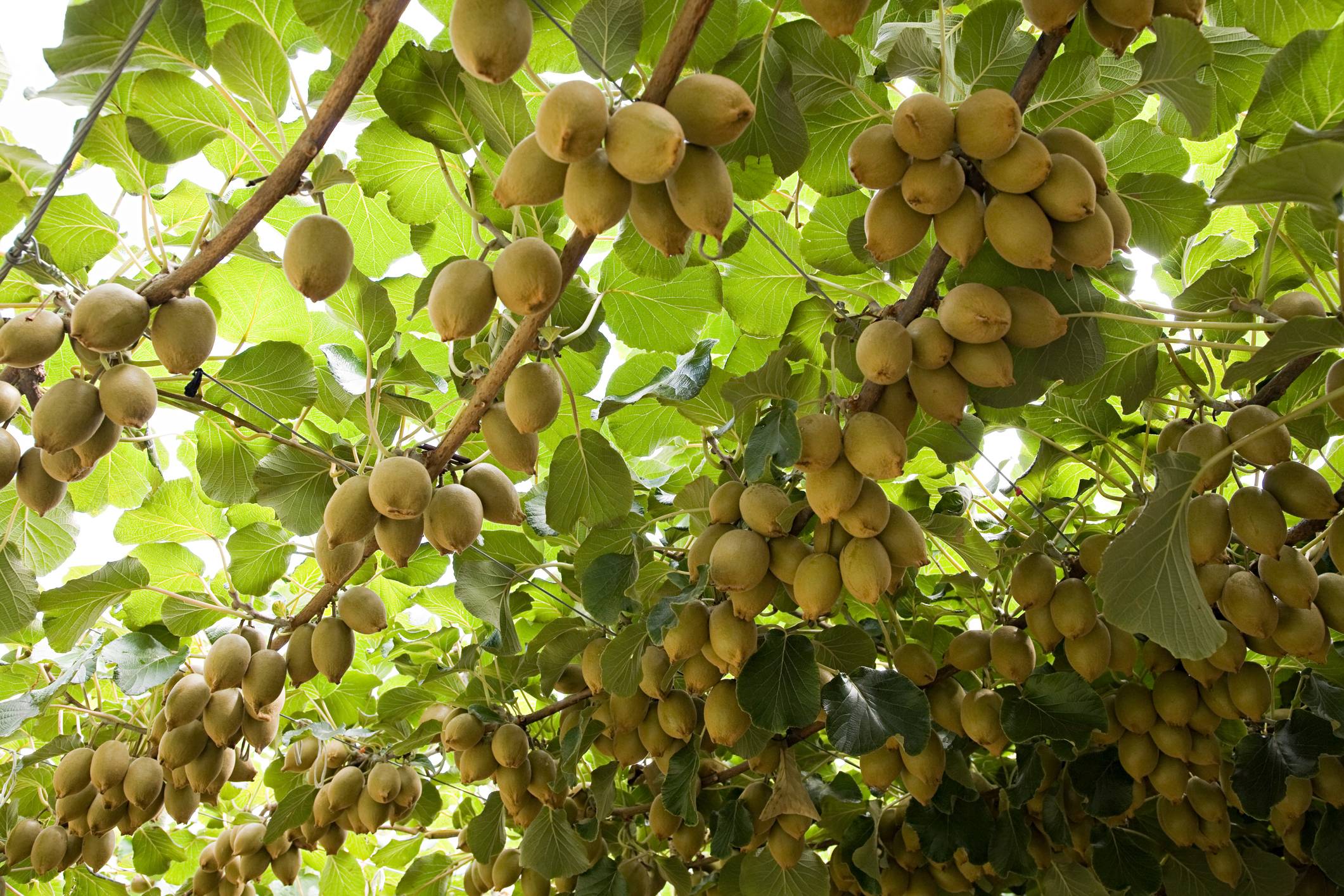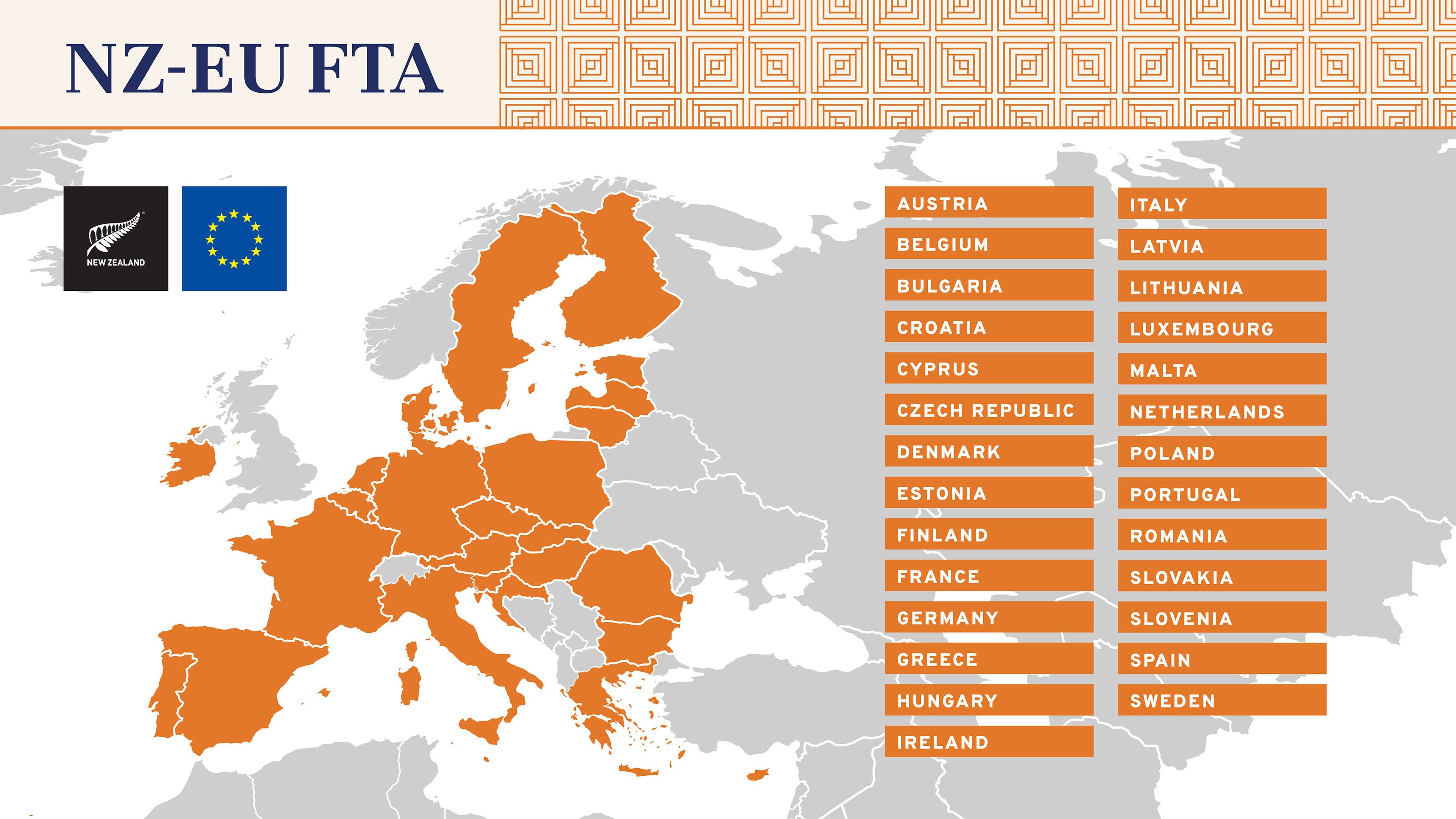
New Zealand and European Union Free Trade Agreement Overview


Overview
New Zealand has longstanding historical, cultural, political and economic ties to Europe. These are the foundation for our modern relationship with the European Union and for its 27 Member States.
The European Union is a close and like-minded partner for New Zealand reflected in our high quality free trade agreement which entered into force on 1 May 2024.
This FTA delivers significant economic gains. It creates enhanced opportunities, cuts costs through more favourable access to the EU, supports trade diversification and will contribute to growing the New Zealand economy and strengthening New Zealand’s economic resilience.
As with our other free trade agreements, we have preserved the unique status of the Treaty of Waitangi. The agreement increases opportunities and reduces barriers for Māori businesses in one of the world’s biggest markets.
Read more information including key outcomes and text of the agreement.

Economies involved
The FTA with the European Union provides a huge opportunity for New Zealand exporters, providing access to a market with a combined population of close to 450 million people who already consumed about 6 per cent of our overall exports prior to the FTA entering into force.
Two-way goods and services trade between New Zealand and the EU was worth NZ$21.58 billion in the year to June 2025.
In the year to June 2025 New Zealand exports to the European Union demonstrated strong positive performance with an overall increase of 28% to $7.88 billion. Services exports from New Zealand to the European Union grew a strong 15% to $1.95 billion.
Our main goods exports to the EU are wine, fruit, dairy, fish and seafood, meat, medical appliances and mechanical machinery. Our services exports are mainly tourism, transportation services and professional and consultancy services.
Under the FTA Dairy exports rose 64% to $557 million in the year to June 2025. Industrial products also saw a significant rise of 44% to $1,191 million. This includes increases in exports of machinery and equipment rising 50% to $747 million and metals rising 68% to $282 million. Horticulture exports rose 38% to $1.17 billion in the year to June 2025. Kiwifruit has excellent growth of 42% to 1.04 billion. This is 25% of New Zealand’s exports of kiwifruit. Seafood exports grew 28% to $363 million in the year to June 2025. This included strong growth in exports of hoki, which increased 29% to $141 million and mussels, which increased 69% to $72 million.
The EU includes two of New Zealand’s top 20 trading partners – Germany and the Netherlands.
New Zealand imported $10.72 billion in goods and $2.99 billion in services from the EU in the year to June 2025.
Overall, the EU is our fourth largest trading partner, accounting for 7.2% of New Zealand's total exports and 12.4% of total imports into New Zealand in the year to 2025.


Key outcomes include
- New Zealand exporters now benefit from significantly improved access into the EU market. New Zealand exporters can compete on a more level playing field in the EU market, particularly against other global exporters who have already secured free trade deals with the EU.
- 91% of New Zealand’s current trade into the EU now enter duty free through tariff elimination and duty-free quotas. When fully implemented after seven years, 97% of current trade will enter the EU duty-free.
- In addition, the FTA will create the conditions for New Zealand trade to grow in areas where it has been significantly constrained due to limited WTO quota access and high tariffs, particularly dairy and beef.
- The FTA provides greater certainty for New Zealand services exporters in the EU market and ensures that New Zealand services exporters can compete in the EU market on a comparable basis with other EU trading partners. With limited exceptions, New Zealand services exporters will be guaranteed treatment that is equivalent to both local EU competitors and services exporters from other countries, including the UK and Singapore.
- The investment rules in the FTA will provide greater transparency and certainty as to how New Zealand investors will be treated in the EU and vice versa.
- The FTA contains ambitious outcomes on climate action and the Paris Agreement, including making these commitments enforceable in the FTA.
- Protecting and promoting Māori interests in this FTA was a priority for New Zealand. The FTAs includes our Treaty of Waitangi/Te Tiriti o Waitangi exception, which protects the New Zealand Government’s ability to adopt policies that fulfil its obligations to Māori, including under the Treaty of Waitangi. New Zealand has secured a Māori Trade and Cooperation chapter in the FTA which will provide a valuable new platform to advance Māori economic aspirations in the EU.
- There will be no Investor-State Dispute Settlement in this FTA.

The Free Trade Agreement preserves the unique status of Treaty of Waitangi /Te Tiriti o Waitangi and the FTA provides opportunities for Māori exporters in the EU market.

The FTA includes ambitious provisions to promote important trade and sustainable development outcomes, including in areas such as climate action, labour rights, gender equality and reform of harmful fisheries subsidies.

Share your views
If you have an interest in the FTA, including any questions or feedback, we welcome you to submit this at any time by email or post.
Share your feedback on the New Zealand-European Union FTA (NZ-EU FTA). Contact us via post (address below) or email us at FTA_outreach@mfat.govt.nz to continue to share your views and register your interest in future engagement opportunities, or at exports@mfat.govt.nz for queries about using the Agreement and imports from and exports to the EU.
Post:
EU FTA Coordinator
Ministry of Foreign Affairs and Trade
Private Bag 18-901 Wellington
